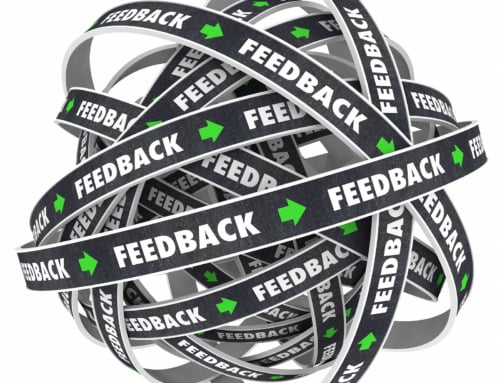Drew’s Note: I’m pleased to bring you this guest post. Meet another thought leader who shares his insights via the blogosphere. So without further ado…Chris Wilson. Enjoy!
Implementing the proper business growth strategies is tough when you are spending a large portion of your time still working in the day-to-day operations of your agency. If you want it to grow the way it should, you need to take a step back and work on long-term strategies.
You’re good at what you do, right?
Well, if you’re like the majority of agency owners that we at Function Point interact with, then you’re very passionate about your firm. You started the business because you had a competency for creating great creative work, and your entrepreneurial spirit drove you to make a living out of it. Your friends have probably suggested at one point or another that you’re a little bit of the best kind of crazy — always dreaming bigger and reaching higher!
That’s all great, but here’s the crux: For a creative agency to be successful, the owner has to move past all the details of the day-to-day operations. This isn’t easy! You have to figure out the art of working on the agency, not in it.
At the end of the day, though, you need to be dreaming of what you want for the company, setting the big goals and business growth strategies for the future and building up the people around you.
In my 18+ years of working with agency owners, I’ve found that those who focus on client profitability, team member contribution, strategy and culture are the ones who have succeeded at getting their business scaled up. Directing your attention to these 4 areas will help you get on top of your business so that you can reach your next big pivot point.
Client Profitability
Profit analysis reporting will provide you with a snapshot of client profitability. Comparing an agency’s estimated value of work to actual costs incurred, with the value of billable work and invoiced dollars, gives you immediate insight into profitability. Now, use your intuition and run the report with a set of filters such as clients or campaigns, and you get answers to the questions on your mind.
Having insight into the profit of a specific client or campaign will allow you to better understand the dynamic of your firm’s services with that client. If you’re profitable and you know the client is happy, it’s all good. But, if you’re not making money and the client is high maintenance and high on demands, it may be time for that tough discussion about increasing pricing or perhaps ending your relationship.
Team Member Contribution
Team member contribution, or utilization, is the percentage of work performed that is truly billable. Having this value as a widget on the dashboard of your management system is like having an instant barometer on profitability. Are you trending above or below your set budget targets? Do you need to look more closely at an individual, or the utilization of the entire studio team?
Having it all in real-time will allow you to understand the workload and stress (or lack thereof) that is occurring in your studio. If you combine this understanding with the knowledge of your individual staff, you get a fuller picture regarding absenteeism, work moral and just how engaged your team is when it comes to satisfying your clients. Culture, individual contribution, and having staff who are fully engaged in the business is so key with today’s Millennial team members. Celebrate when people are really performing at top speed. Use utilization data to tell you when that’s happening.
Strategy and Culture
Jim Collins’s book, Good To Great is a classic business leadership read. The book speaks to important and valuable notions that shape strategy and culture. Here are 3 of the key takeaways for owners who want to work on their business from the angle of strategy and culture:
1. Focus on Fit
Get the right people on your bus, and get them in the right seats. You’re the bus driver, and you can make a tremendous difference for profitability knowing your staff’s performance. What do you do when you think a designer or production person is underperforming? Use your management tools to look at completeness of work, documentation of work completed, and key billing issues like utilization. By using this data to determine a person’s fit within your firm, you will be making better long-term decisions for your company. I like to ask myself: would I enthusiastically hire this person based on his or her current performance? Asking questions like these means you’re working on your business!
2. Commit To A “20-Mile March”
Collins uses this term to depict the concept of systematically constructing buffers for unforeseen events. As an owner, you want to design your agency’s entire journey to reduce the role of damaging blows and chance events. This all has to do with getting a rhythm going in your firm. Travel the same distance every day, month and year. Even if you can take a ginormous leap, choose instead to be consistent. Don’t be afraid to question growth for growth’s sake. Instead, have concrete and rigorously pursued performance structures that keep you on track.
Here’s another way to think about it: have a lower ceiling and an upper ceiling. There’s the hurdle that you jump over (that’s your ambition to achieve) and a ceiling that you will not go above (your self-control to hold back). You can be consistent in your growth expectations by knowing who your profitable clients are and understanding what kind of work your agency makes top dollar on. Even the simplest of profit analysis reports should be able to assist with this.
3. Place A Big Bet In The Next 3 Years
This is how your business growth strategies create a new level of operation. Use your understanding of your firm, your team and your market to test a new concept, and your internal capability. Knowing your business well enough will ensure that the change you implement is calculated – you don’t want to blindly bet the farm. Maybe it’s offering a new service like SEO or content creation using Hubspot or Marketo. Whatever you decide, test it! As Collins writes, “Fire bullets to calibrate. Fire Cannonballs to go big.”
It’s spring 2015. The economy is improving and agencies are growing revenue. Having the business growth strategies to understand just how profitable yours is, and from whom you’re making that cash, gives you— the crazy dreamer who started a creative agency— the ability to truly work on your agency rather than in it. What are you doing to keep that crazy dream alive?
This guest post was written by Chris Wilson, President and CEO at Function Point Productivity Software






